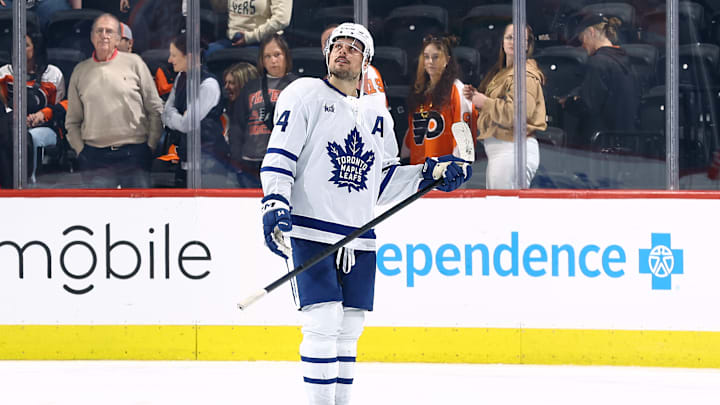Playing while shorthanded has been a season-long problem for the Toronto Maple Leafs. Until recently, their power play has been one of their biggest strengths.
Together, the declining performance of both is one of the greatest concerns for the Leafs as their season reaches the final stages and they prepare for the playoffs.
A power-play drought can be brushed aside as something that is bound to happen throughout a long season. Plus, the Leafs have historically been strong in this area for the past five or so years.
While these facts are true, there is a rightful reason to be concerned about the Leafs subpar special-teams play.
Fixing Their Special Teams Play is the Top Priority For the Toronto Maple Leafs
First and foremost, is the Leafs inept special teams play during their most recent playoff disappointments.
During their last three playoff appearances, the Leafs power play has converted on 15 out of 92 opportunities for a 16.3% success rate. That's roughly ten percent lower than their regular-season efficiency.
Last year's playoffs saw the Leafs kill penalties at a 73.3% success rate. In 2021-2022, they were at 78.8%. That's two successive postseasons at well under an average rate of 80.0%.
In fairness, during the 2020-2021 playoffs, the Leafs killed 84.2% of their penalties successfully. That roster included Jake Muzzin, Zach Bogosian, Justin Holl, Alex Kerfoot, and Ilya Mikheyev who were significant parts of the shorthanded units.
Those players, especially the most recently departed Holl and Kerfoot, have not been adequately replaced as evidenced by the Leafs abysmal penalty-killing this season.
Power Play Solutions Are Easier to Solve Than Penalty Killing
The Leafs abundance of high-end skill makes the power play a lesser concern. Yet, despite the presence of Auston Matthews, Mitch Marner, William Nylander, John Tavares, and Morgan Rielly, the unit has had postseason struggles.
Hope is evident on a couple of fronts. Tyler Bertuzzi gives the Leafs an additional net-front presence, along with Tavares, for tip-ins and rebounds. Ugly goals around the net become more critical when the checking gets tighter in the playoffs.
A more seasoned Matthew Knies can also be an option. Matthews has the size and playoff experience to deal with the closer attention that postseason hockey will bring.
Another possibility that the Leafs seem more willing to try is using Timothy Liljegren on the point. Sheldon Keefe must give this a meaningful chance during the final games of the regular season.
He provides more of a shooting threat than Rielly, and a different look with his right-handed shot.
Solving the Leafs penalty-killing woes is more complicated. It doesn't help that Marner and Calle Jarnkrok are both out injured at the moment, with no imminent return for either.
They are a key part of the forward pairings while playing shorthanded. Marner's passing acumen and vision are a key component of the power play.
Shorthanded fixtures must be found from the group of Pontus Holmberg, Connor Dewar, and David Kampf or anyone else that proves they can be effective.
The most pressing need is finding reliable defensive pairings. Too often, the Leafs get exposed in front of their net. Trade deadline additions Ilya Lyubushkin and Joel Edmundson might help. Exiled Simon Benoit should also be given another opportunity.
The worst-case scenario? Maybe, the Toronto Maple Leafs defense doesn't have the proper personnel to help in this area.
Time is running short for the Leafs to get something figured out. The current trend of the special teams won't help slay any playoff demons.
